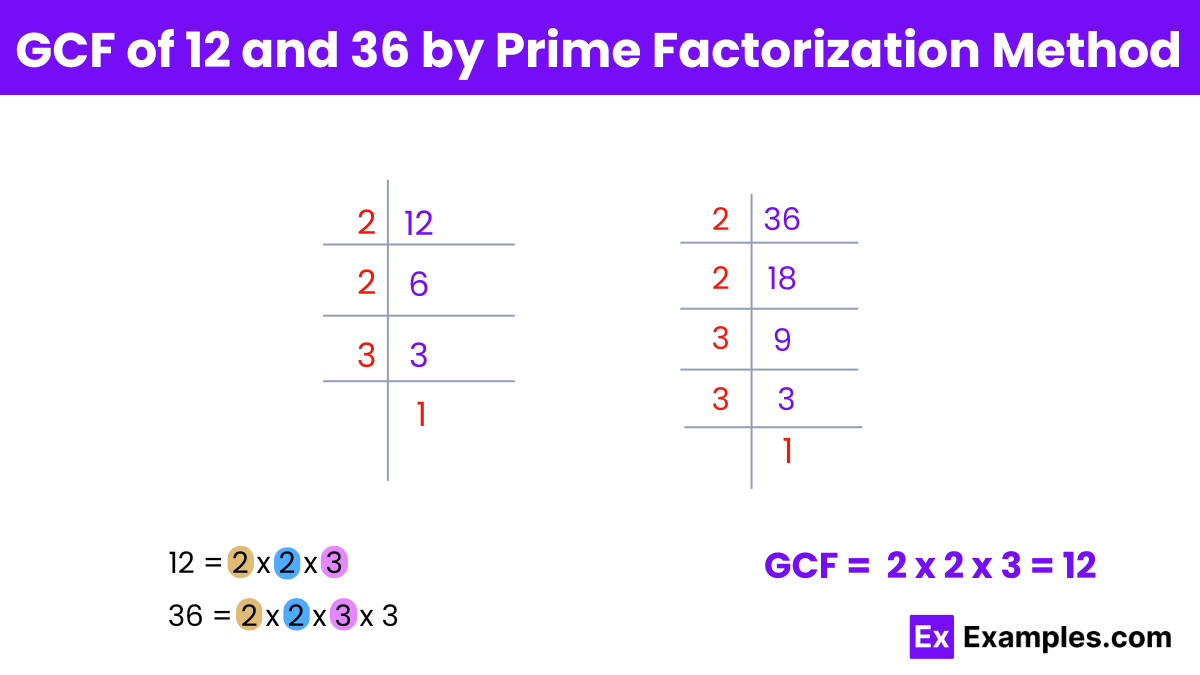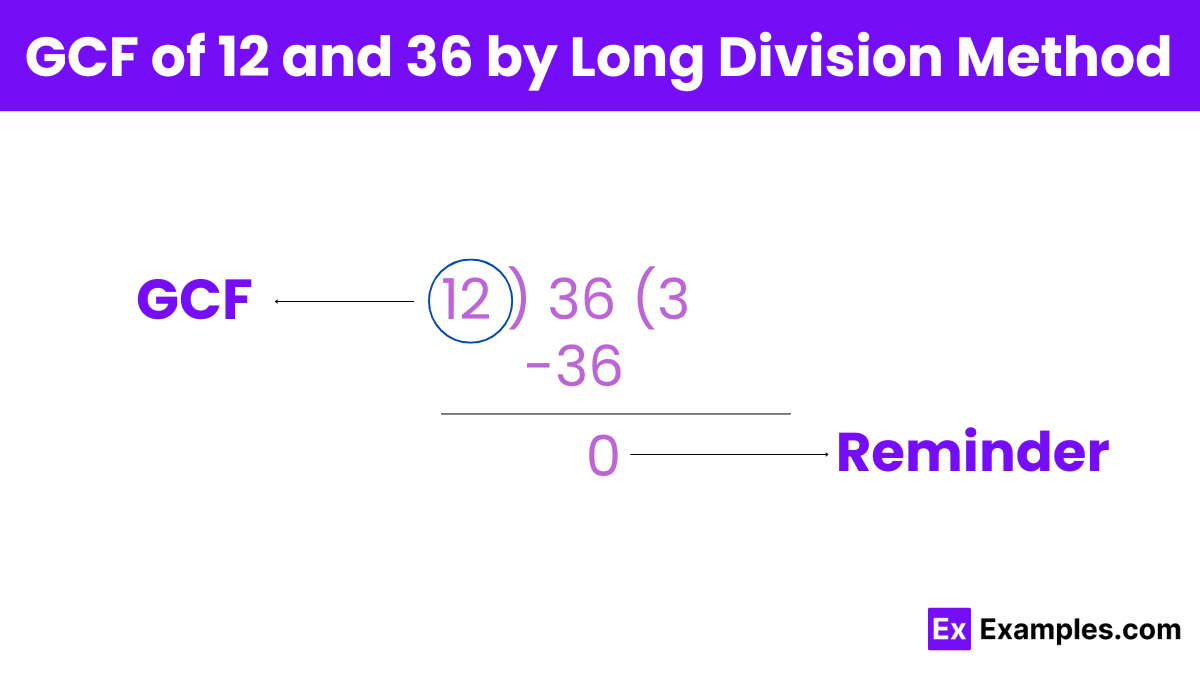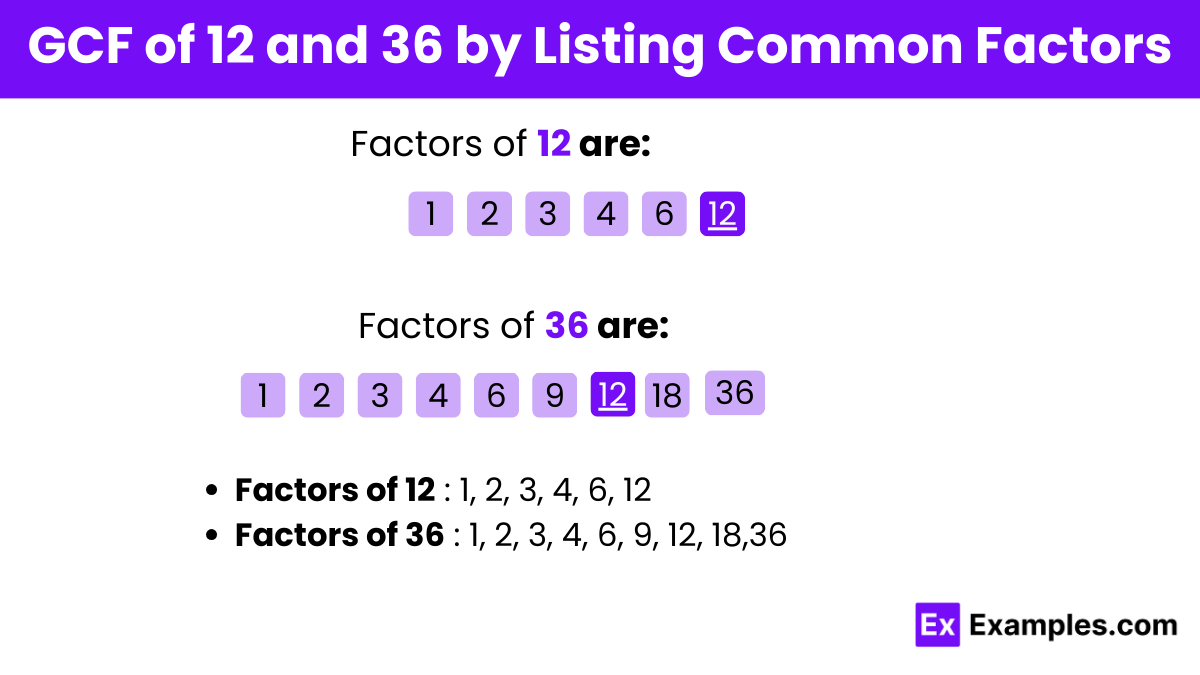If the GCF of 12 and 36 were increased by 6, what would be the new number?
18
24
30
12


The greatest common factor (GCF) of 12 and 36 is 12. This value is derived using various methods such as prime factorization, listing common factors, or applying the Euclidean algorithm. When prime factorizing, 12 is broken down to 2²×3 and 36 to 2²×3². The common prime factors are 2 and 3, with the lowest powers being 2²and 3¹, resulting in 2² × 3 =12 . Listing the factors of 12 (1, 2, 3, 4, 6, 12) and 36 (1, 2, 3, 4, 6, 9, 12, 18, 36) also highlights that 12 is the highest factor both numbers share. Using the Euclidean algorithm, which involves successive divisions, similarly confirms that 12 is the largest number that divides both 12 and 36 without leaving a remainder, establishing it as their GCF.

To find the greatest common factor (GCF) of 12 and 36 using the prime factorization method:
Step 1: Prime factorize both numbers:
For 12: 12 = 2² × 3
For 36: 36 = 2² × 3²
Step 2: Identify the common prime factors and their lowest powers:
The common prime factors between 12 and 36 are 2 and 3. The lowest powers are 222^222 and 313^131.
Step 3: Multiply the common prime factors with their lowest powers to determine the GCF:
GCF = 2² × 3¹ = 4 × 3 =12
Therefore, the greatest common factor (GCF) of 12 and 36 by prime factorization method is 12.

To find the greatest common factor (GCF) of 12 and 36 using the long division method:
Step 1: Start by dividing the larger number (36) by the smaller number (12).
36 ÷ 12 = 3 with a remainder of 0.
Since there is no remainder, the division process stops here.
Step 2: The divisors at this step, where the remainder becomes zero, is the greatest common factor (GCF).
GCF = 12.
Therefore, the greatest common factor (GCF) of 12 and 36 by the long division method is 12.

To find the greatest common factor (GCF) of 12 and 36 by listing common factors:
Step 1: List the factors of each number.
Factors of 12: 1, 2, 3, 4, 6, 12
Factors of 36: 1, 2, 3, 4, 6, 9, 12, 18, 36
Step 2: Identify the common factors.
Common factors: 1, 2, 3, 4, 6, 12
Step 3: Determine the greatest common factor.
The highest number in the list of common factors is 12.
You can calculate the GCF using methods like prime factorization, listing common factors, or long division.
No, the GCF is always less than or equal to the smallest number.
Long division and listing common factors are other methods.
Listing common factors is quick and straightforward for small numbers.
It’s crucial for simplifying expressions and solving problems involving ratios.
The Least Common Multiple (LCM) is also closely related to the GCF.
Text prompt
Add Tone
10 Examples of Public speaking
20 Examples of Gas lighting
If the GCF of 12 and 36 were increased by 6, what would be the new number?
18
24
30
12
What is the difference between 36 and the GCF of 12 and 36?
6
12
18
24
Which of these numbers is the largest factor common to 12 and 36?
6
8
10
12
If the GCF of 12 and 36 were doubled, what would it be?
24
18
12
6
If the GCF of 12 and 36 were doubled, what would it be?
24
18
12
6
How many factors does the GCF of 12 and 36 have?
4
6
8
10
What is the GCF of 12 and 36 when divided by 2?
6
12
18
24
What is the sum of the factors of the GCF of 12 and 36?
24
30
36
18
What is the result of multiplying the GCF of 12 and 36 by 2?
12
18
24
32
Which of the following is a common factor of both 12 and 36?
3
8
10
14
Before you leave, take our quick quiz to enhance your learning!

